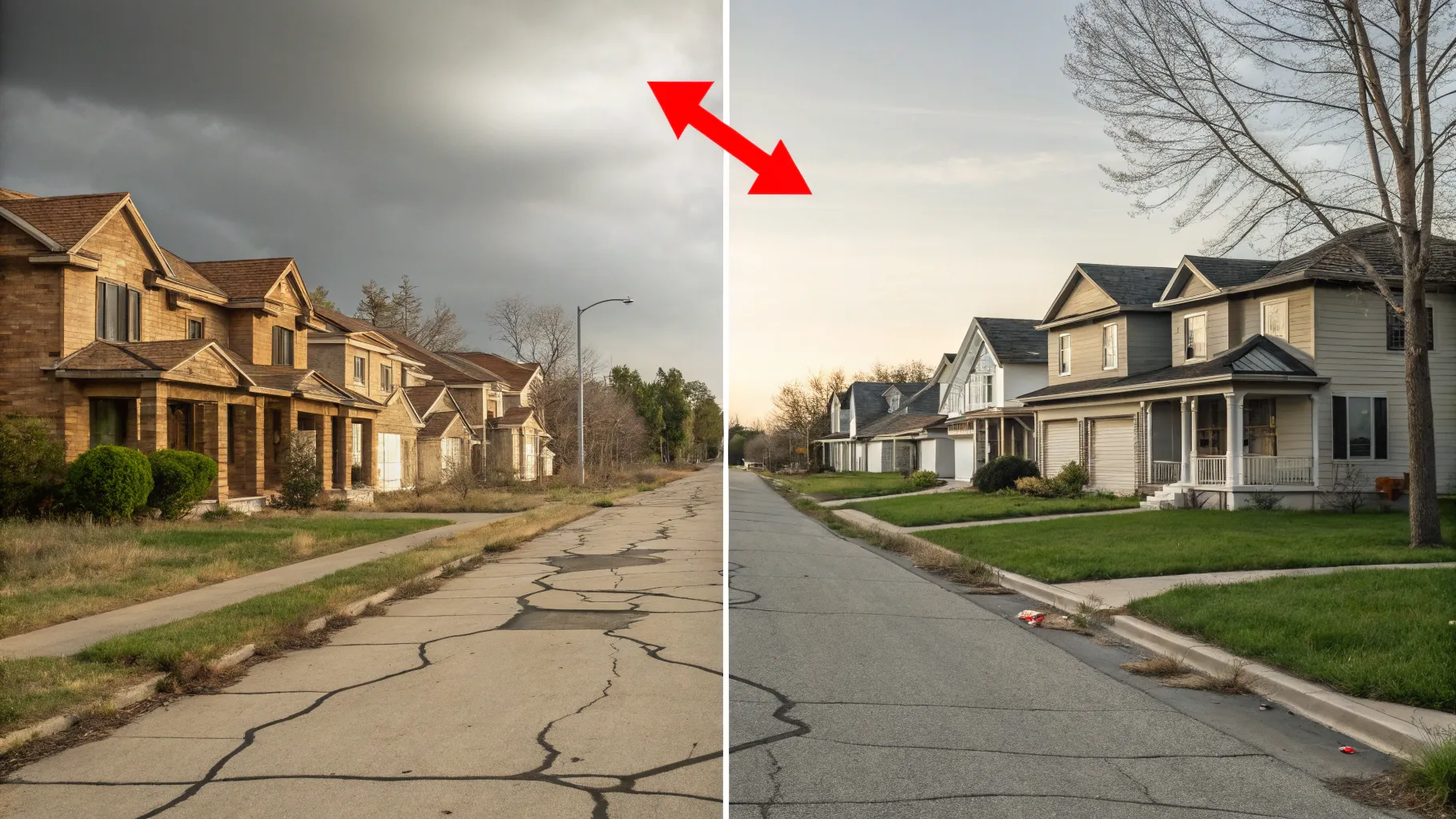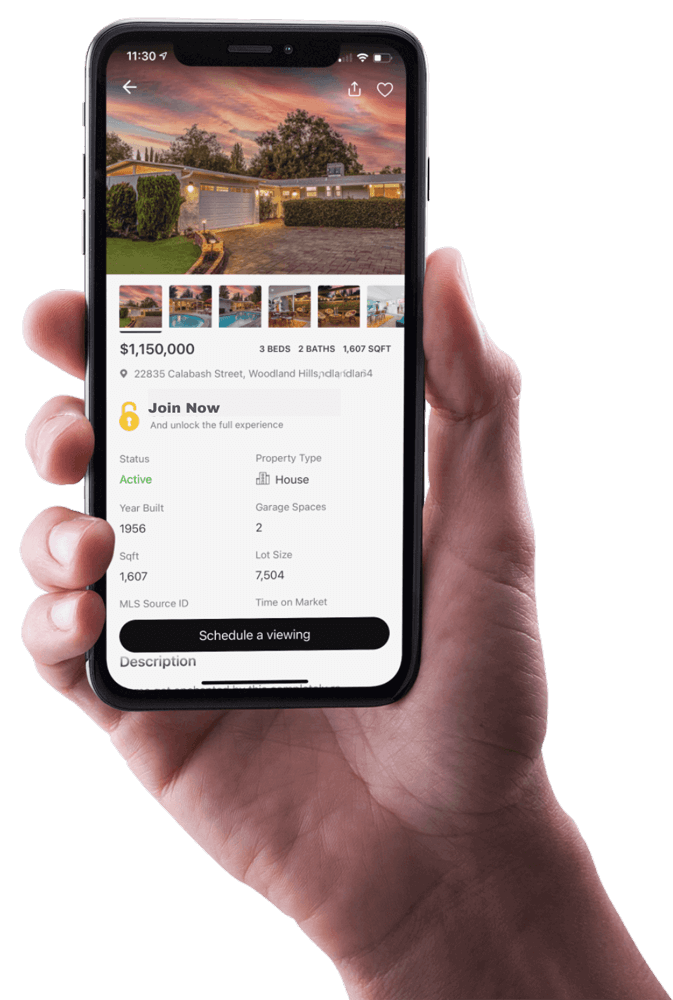While there are plenty of cities across the country that offer strong job markets and access to good schools, there's not quite as many that also have affordability, stability, and family-friendly amenities.

What are 1031 exchanges. And specifically, how they work in a residential real estate deal. If you're looking to defer a capital gain on your next residential real estate investment sale and want to know the ins and outs of a 1031 exchange, keep reading below.
If you sell a real estate investment property at a gain, just like any other investment vehicle, you're going to have to pay taxes on that capital gain at sale. But with real estate, one of the many tax advantages that you have as a real estate investor is the opportunity to do what's called a 1031 exchange.
What is a 1031 Exchange
The 1031 exchange term is referring to section 1031 of the U.S. Internal Revenue Code. And what that section does is it allows real estate investors to defer a capital gain with the reinvestment of those sale proceeds into one or more properties of equal or greater value. With that said, how does a 1031 exchange actually work in a Utah real estate, and what are the details? Well, first, if you want to do a 1031 exchange, rule number one is that you can't touch the sale proceeds. Meaning that when you go to sell a property, the sale proceeds from that property sale actually need to be transferred to a third party called a "qualified intermediary."
Now, this qualified intermediary is a third party that essentially holds onto the funds until those funds are transferred to the seller of whatever property you end up deciding to buy. Now, this is a really important part of the process. You need to decide that you're doing a 1031 exchange before you actually sell the property. Because if you actually touch those sale proceeds and those sale proceeds are distributed to you upon close of escrow, the 1031 exchange becomes void and you're no longer able to defer those capital gains taxes.
Assuming a qualified intermediary is found, what you need to do is find a like-kind property that you want to exchange into. Now, this doesn't necessarily have to be the same product type. If you're selling a multifamily property, you could buy a retail shopping center, or an office building, or an industrial warehouse as long as it's a piece of income-producing real estate. Now, in order to be able to defer all of your capital gains taxes, you'll also need to make sure that this replacement property is of equal or greater value to that property that you're going to sell. Now, obviously, as a real estate investor, you'll have a lot of different options to choose from as far as what your replacement property is going to look like.
1031 Exchange Timelines
That said, there are a few specific guidelines that you'll need to follow in order to make sure that you are in compliance with the 1031 exchange rules. As far as timelines are concerned, from the time that you actually close on the property that you sell, you have 45 days to formally identify one or more properties that you're going to exchange into. Now, when you're identifying these properties, obviously you want to make sure that you keep your options open and identify as many properties as you can in case something goes wrong with one or two of these. But you'll also need to follow some pretty strict guidelines on how you actually identify these deals.
Three-Property Rule
The first way to do this is the Three-Property Rule. And the Three-Property Rule says that you can identify up to three real estate properties regardless of their market value. If you have a really solid idea that you're going to be able to close on at least one of three properties, then this could be a great option that you could choose. Now, the next rule that you could use is the 200% Rule. And the 200% Rule allows you to identify an unlimited amount of properties, but the cumulative value of those properties can't be more than 200% of that sale value of the property that you just sold. If you have multiple properties that are maybe smaller than the property that you just sold and you want to be able to identify more than three properties, this could be a great rule for you to follow.
95% Rule
Now, finally, there is one more rule here, and that is the 95% Rule. And the 95% Rule allows you to identify an unlimited amount of properties. But with this method, you're required to close on 95% of the aggregate value of all of those properties that you've identified. Again, this could be a great option if you're buying multiple smaller properties after you sell a deal. But oftentimes, it's the opposite where investors are trading out of a smaller property and moving into one larger property.
Reverse 1031 Exchange
Once you've identified your replacement property or properties, you actually need to close on those deals within 180 days after you closed on the deal that you're exchanging. So, 45 days to identify and 180 days to close. According to the Federation of Exchange Accommodators, another variation of the 1031 exchange is a reverse 1031 exchange, which allows an investor to acquire the replacement property before actually selling the property that is going to be exchanged.
In this scenario, a party called the exchange accommodation titleholder will hold the replacement property. And then within 45 days, that investor needs to identify that property that they're going to sell. And then within that 180 day window, that investor actually needs to sell the property and the transaction needs to be closed. Now, once that sale is completed, that property that was initially acquired to start that 1031 exchange will finally be transferred from that exchange accommodation titleholder to the real estate investor.
Conclusion
Overall, a 1031 exchange can be a great way to defer taxes on a real estate investment. That said, this is a very tricky process, so you want to make sure that you have qualified professionals on your side, including 1031 exchange experts, accountants, and attorneys that know this process inside and out. If you have any sort of misstep on this, or you do anything out of order, your 1031 exchange could be void and you'll likely owe capital gains taxes on your sale ... which is what you've been trying to avoid by doing this in the first place.
Related Articles
For more real estate investment strategies and tax tips:













